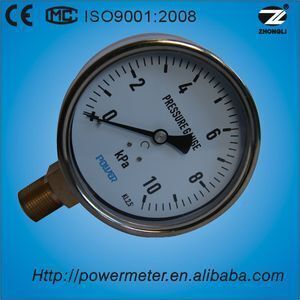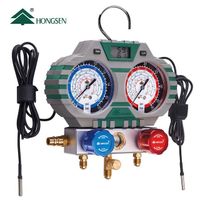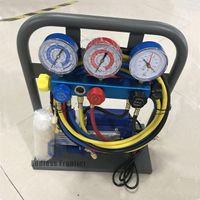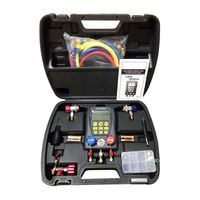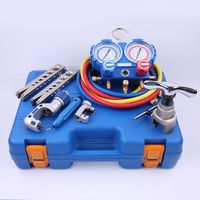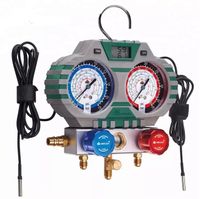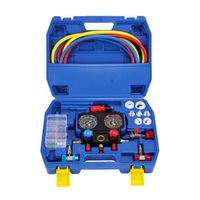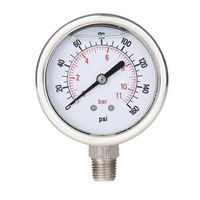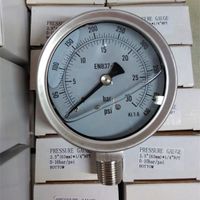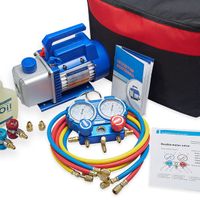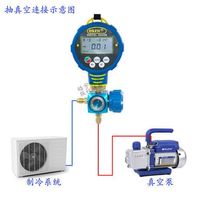YE 100mm stainless steel capsule bellows pressure gauge with 0-10kpa pressure range
-
Supplier: Suzhou Power Meter Co., Ltd. -
Region: Jiangsu, China -
Contact: Ms Shanshan Wu -
Price: $1.00 /piece -
Min. Order: 1 piece
| size: | 100 mm; | Material: | stainless steel 304; |
| Mounting: | Bottom type; | Thread: | PT/NPT/BSP/G ,1/4'' ,1/2'' ,1/8'' 3/8''; |
| Connection: | Brass; | Place of Origin: | Jiangsu China (Mainland); |
| Port: | shanghai; | Supply Ability: | 100000 Piece/Pieces per Month; |
| Model Number: | YE-100A; | Pressure range: | 0-10kpa; |
| Type: | Capsule pressure gauge; | Packaging Detail: | box/carton/pallet; |
| Brand Name: | Power; | Payment Terms: | T/T; |
YE 100mm stainless steel capsule bellows pressure gauge with 0-10kpa pressure range
Product description:
| Product name | YE 100mm stainless steel capsule bellows pressure gauge with 0-10kpa pressure range |
| Case/cover | stainless steel 304 |
| Window | glass |
| Connection | brass/ bottom type |
| Thread | G/PT/NPT/BSP ,1/2'' ,1/4'',1/8'',3/8''...... |
| Mebrane | phosphorus bronze |
| Movement | brass |
| Dial plate | aluminum |
| Pressure range | 0-10kpa |
| Accuracy | 1.60% |
| Liquid filling | -- |
| Liquid | -- |
| Picture as following: | |
Picture show:


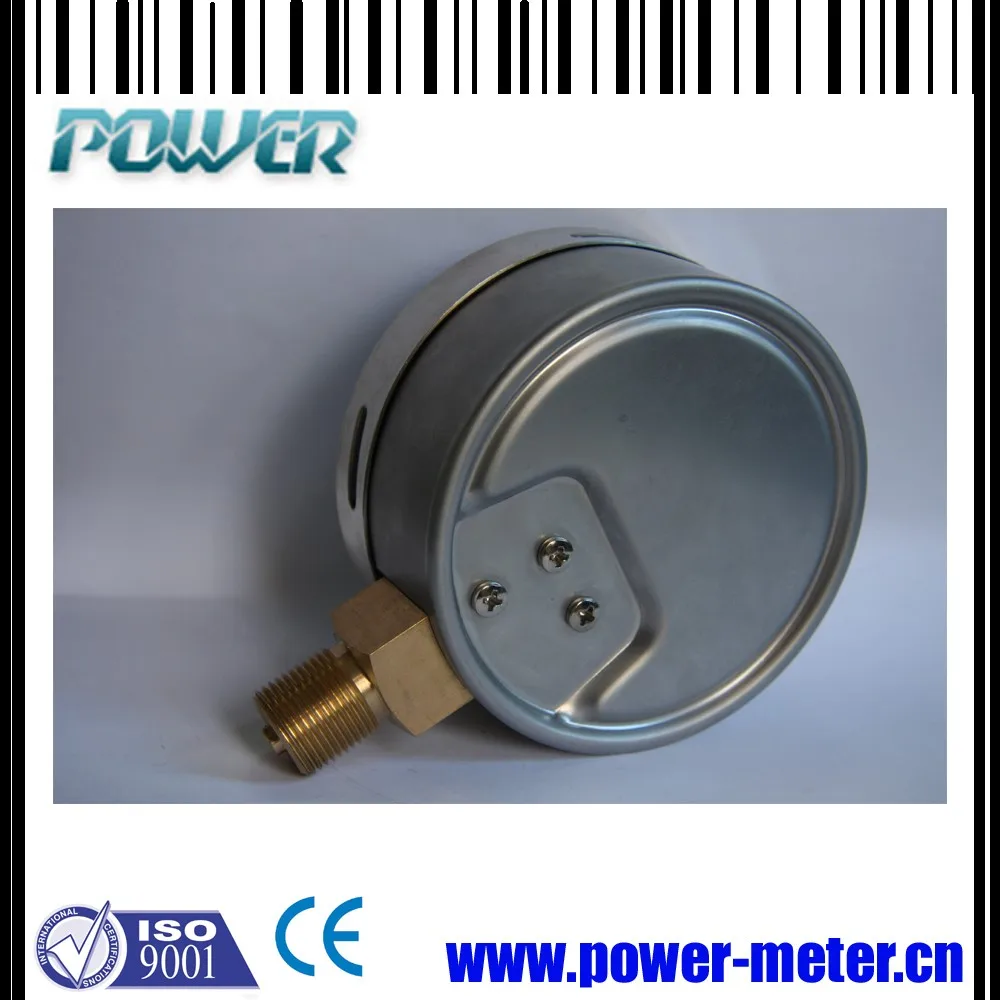

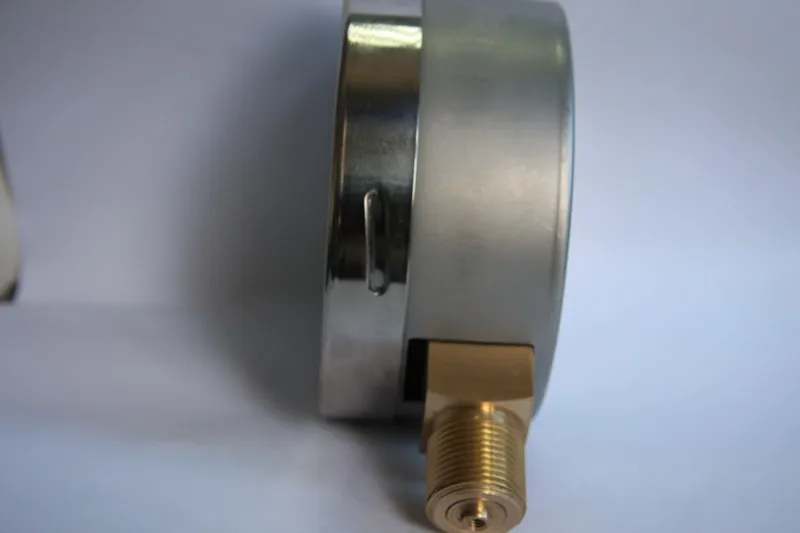
Dimension: :

Certificate:

Quality control:
* 100% pre-inspection before shipment with "PASSED" ticket.
* ISO 9001 certificate passed in year 2008
Delivery:
* Sample order within 7 days
* Bulk order 15 days upon order confirmation
After Sales Service:
* Twelve months quality guarantee;
* Provide solutions within 24 hours.
Abundant export experience:
*Nearly ten years export experience;
*One-stop sales service.
Production Mounting:

Production Process :
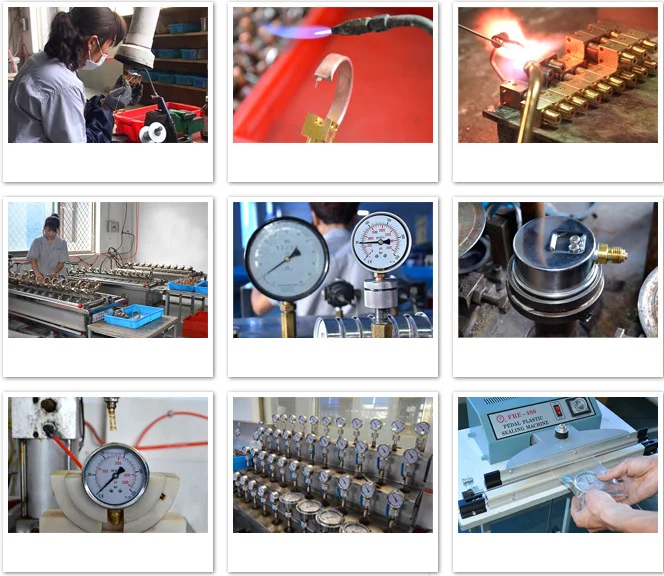
Testing equipments:

Production equipments:

Packing:

Applications :
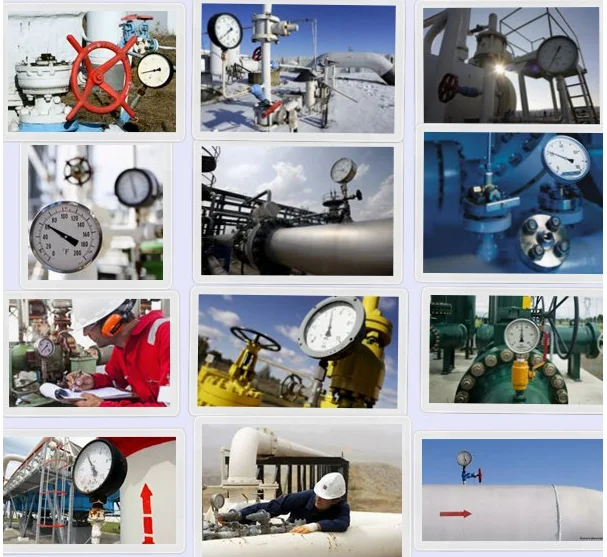
Tips 1 :
How to Buy a Pressure Gauge
Selecting the appropriate Pressure Gauge can be challenging, particularly when you don't have a part number and when you have already tossed the old gauge. The following step-by-step guide will walk you through the basics of selecting a pressure gauge. Once you have determined the type of gauge use the Gauge Finder to purchase a pressure gauge.
STEP 1: Pressure Range (PSI)
The first thing you need to know when purchasing a pressure gauge is what pressure range (pounds per square inch, or “psi” is standard) you need. Since the accuracy of most pressure gauges is best in the middle third of a gauge, you should always select a gauge with a range that is about twice your normal operating pressure. For example, if you have an air compressor with a normal working pressure of 50 psi you want to select a gauge with a 100 psi range.
The rule of thumb with pressure gauges is that when the operating pressure of the system is normal, the needle should be pointing straight up or in the “twelve o’clock” position. This makes the gauge easier to read at a glance – if the pointer is straight up, things are normal. Gauges are most accurate in the middle third of their range, so you’ll also get a better measurement at your most typical pressure.
If you cannot find a gauge at exactly twice your working pressure, go to the next step up. For example, if you want a 160 psi gauge and it is not in stock, a 200-psi gauge can be substituted. If the range is too low and the gauge is over-pressurized it will break. You want some room to spare at the top of the scale so that if your pressure goes above normal, it won’t damage the gauge.
STEP 2: Dial Size
Dial size refers to the diameter of the circular face of the gauge. The easiest way to choose a size is to measure the diameter of your old gauge. Our gauges range in dial sizes from 1-inch for tight spaces to 10-inches for reading from a distance. When selecting a gauge choose one that fits within the physical space available and a gauge size that is easy to read where you have it installed.
If dial size is not important to you we recommend selecting a 2-1/2" gauge. If there is such a thing as a "standard" gauge size, this is it. The 2-1/2" gauge is by far the most common gauge that we sell and you will find hundreds of in-stock options to choose from. View the dimensional drawings if you need more information. Dimensional drawings for all of our gauges are found on every product page and provide the exact measurements.
STEP 3: Connection
There are two basic connection types for mounting: back and lower. The back mount is what it sounds like. The connection protrudes from the back of the gauge. In a lower-mount (sometimes called a stem mount), the connection is on the bottom of the gauge. Which type you need will usually be pretty obvious. Manufacturers divide back mounts into "center back" and "lower back," (right in the middle of the back vs. down toward six-o'clock), but unless you're trying to fit the gauge into a tight space, or mount it in a panel, the difference usually doesn’t matter.
You also have to consider connection size. For 2-1/2" dial sizes, a 1/4-inch NPT (National Pipe Thread) is by far the most common size. If you're replacing a gauge, you want to be aware of the existing connection size. Other common connection sizes are 1/8-inch NPT (for 1-1/2" & 2" dials) and 1/2 inch NPT (for 4" and greater dial sizes).
More helpful information
Accuracy
Accuracy span is the single factor that has the most influence on price, so you want to get a gauge that is accurate enough – but not more accurate than you need. Gauges are available with accuracies from +/-3/2/3% to 0.25% of span (ASME grade B to grade 3A). Consider your application to determine accuracy needs. If the gauge is for your backyard pool, you don’t need a lot of accuracy and a "3-2-3" gauge should be just fine. These gauges are accurate to plus or minus 3% in the bottom third and top third of their range, and within 2% in the middle third. If you need something a bit better than that, a gauge with 1.5% accuracy good choice for applications where small differences in pressure aren’t critical. Gauges with 1.5% accuracy will give you a more accurate reading (+/-1.5% across the range) than a 3-2-3, but are still quite affordable.
If you really do need to keep track of whether your system is at 59 PSI or 59.5 psi, you need a higher accuracy gauge, and we carry them, all the way up to a level of 0.25%. If you have an application where accuracy is that critical, you probably know it. If you aren’t sure, give us a call and we’ll make sure you get the right gauge.
Liquid-Filled
There are two reasons to fill a gauge with liquid (we generally use glycerine). Liquid steadies the pointer and makes the gauge easier to read. The liquid also lubricates the internal parts of the gauge, making it last longer. So if you have an application with a lot of vibration, or want to get a longer life out of your gauge, go for a liquid-filled case. We have three options available: dry case, glycerine filled and dry case-liquid fillable. "Dry case" gauges are not able to be filled with liquid. "Glycerine-filled" gauges are shipped filled with liquid. "Dry-case, Liquid Fillable" gauges are for customers who prefer to fill their own gauges.
Glycerine is the most common all-purpose liquid to use. If you need to use a gauge in extreme temperature conditions, either very low (below -20F/-29C) or very high (over 180F/82C), call us for other options.
Wetted Parts
The "wetted parts" of the gauge are the parts that come in contact with the process that is being measured (liquid, air, gas, etc). We have special materials for unusual applications (for example, highly corrosive liquids) but by far the most common materials are brass and stainless steel. Brass is less expensive, and is a great choice with non-corrosive gases or liquids (for example: air, water, or gasoline). Stainless steel stands up better to acid and alkaline substances and is more durable.
If you have a special application, need a unique gauge, or just feel more comfortable talking to a knowledgeable and friendly person, by all means give us a call at 0086-512-80911550-8033
Tips 2 :
Gauge Types
Industrial Gauges : Industrial quality heavy-duty sensing elements and case designs, typically used in more demanding applications. These gauges usually have greater accuracy requirements than general purpose gauges. The industrial stainless steel type gauge is built for extended life and designed for harsh corrosive environments.
Commercial Gauges : Often referred to as general purpose or equipment gauges. Though commercial gauges may have to be ruggedly constructed, the service conditions are not expected to be severe. Designed for low cost without refinements, they are frequently referred to as throw-away? gauges since it is not economical to attempt repairs on this type of gauge. Most commercial gauges have a black ABS or painted steel case with brass internal parts and connection.
Process Gauges : Process gauges combine the heavy-duty operating and construction requirements of industrial gauges with the more exacting accuracy and service life demands of many process applications. Designed for the chemical and petroleum processing industries, the cases (typically 4-1/2? are made of corrosion resistant thermoplastic and offer a solid front/blow out back safety case design.
Digital Gauges : Industrial quality gauges with a digital display of the pressure or vacuum being measured. Digital readings are generally easier to read, faster, and more accurate than standard dial type pressure gauges. Digital gauges are typically battery powered.
Precision & Test Gauges : Dial type test gauges are cost effective, extremely sensitive and highly accurate. These gauges are excellent for instrument shops, gauge repair and calibration shops, testing laboratories and other applications demanding precision and consistent results. Test gauges feature adjustable knife-edge pointers and mirror bands on the dial to assure precise readings.
Low Pressure Gauges : Low pressure gauges utilize a capsule sensing element design and accurately measure pressures less than 15 PSIG. Typical measuring units are inches of water, mm of water, oz/sq inch, and pounds per square inch.
Specialty Gauges : Special gauges designed for specific applications. Like fire extinguisher pressure gauge, gas test gauge, water test gauge, ammonia pressure gauge, refrigeration pressure gauge, tire gauge, electric contact pressure gauge etc.
-
HVAC 2 Way Manifold Gauge Kit HS-S60-103 with Liquid Indicator

-
A/c Cooling Charge Service Manifold Gauge Kit Diagnostic Manifold Gauge

-
Auto Air Conditioning Digital Manifold Kit Digital Refrigerant Pressure Gauge Pressure and Temperature Test Multifunctional Manifold Kit

-
Refrigerant dual manifold group instrument group

-
HS-S60-103 Liquid Indicator 2 Way Hvac Manifold Gauge Kit

-
High-quality AC anti-collision refrigerator pressure gauge manifold pressure gauge is suitable for R12 R22 R134A R502 refrigerant

-
High quality 60mm 0-6bar 0-25bar 0-1.6mpa ss304 case brass connection water pressure gauge

-
Pressure gauge 4" stainless steel IP 65 233.50.100

-
Manifold Gauge Kit R22 R12 R134a R410A Manifold Gauge

-
WK-6881H/L digital display refrigeration pressure vacuum display supply


